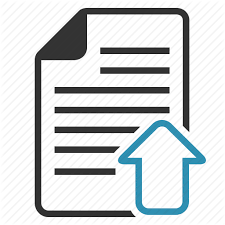PENERAPAN KEBIJAKAN INSENTIF GREEN BUILDING DI KOTA BANDUNG
Abstract views: 1218 | pdf downloads: 1074
Abstract
Bandung is the first city in Indonesia that has issued its regulations on green building incentives, i.e. gross floor area concessions, and tax deduction. Since 2016, the local government has never conducted a monitoring and evaluation of the practice of these regulations. Therefore, this study aims to determine the extent of the implementation of green building incentives in Bandung. By knowing the problems, the strategy oh improvement can be formulated thoroughly. Data collection was done through in-depth interviews with respondents who have a direct link to the implementation of green building policies in Bandung, including the City Spatial Planning Agency (Distaru), The Investment Board One Stop-Service (DPMPTSP), Regional Revenue Management Agency (BPPD), Building Expert Team (TABG) and Regulatory Drafting Team concerning Green Buildings. The results show that so far there has been no incentive issued by the mayor because no building has met the green building requirements of 2 and 3-star by current regulations. The results also obtained that the existing regulations do not regulate the amount, form, awarding time, and the validity period/duration in detail. Therefore, despite meeting the requirements, the building owner/developer cannot propose any green building incentives. Several recommendations are the socialization program that must be carried out on the government, as well as the community, and further regulations governing the details of incentive policies must be designed and issued as soon as possible.
References
Andapita, V. (2019, March). Lack of awareness for green buildings in Jakarta. The Jakarta Post. https://www.thejakartapost.com/news/2019/03/14/lack-of-awareness-for-green-buildings-in-jakarta.html
Antoniades, H. (2011). The application of taxation benefits and incentives for green buildings. State of Australian Cities National Conference, 1–10.
Lampiran Peraturan Wali Kota 1023 Tahun 2016 tentang Bangunan Gedung Hijau, (2016).
BEAM. (2012). BEAM 4/04 dan 5/04 Certified Building. https://www.beamsociety.org.hk/en_beam_assessment_project_4.php. [15 Juli 2018].
BEE. (2015). China’s Growing Green Building Industry and How U.S. Companies Can Get Involved. http://www.export.gov/ China/build/groups/public/@eg_cn/documents/webcontent/eg_cn_088721.pdf. [30 Juli 2019]
CASBEE. (2016). CASBEE Certification System. http://www.ibec.or.jp/CASBEE/english/ certificationE.htm. [02 April 2019]
Chan, A. P. C., Darko, A., dan Ameyaw, E. E. (2017). Strategies for Promoting Green Building Technologies Adoption in the sustainability Strategies for Promoting Green Building Technologies Adoption in the Construction Industry — An International Study. Sustainability (Switzerland), June, 1–18. https://doi.org/10.3390/su9060969
CNN Indonesia. (2015). RI Komitmen Turunkan Emisi 29 Persen di Tahun 2030. https://www.cnnindonesia.com/internasional/20151201004704-134-95078/ri-komitmen-turunkan-emisi-29-persen-di-tahun-2030. [04 Oktober 2019].
Deng, Y., dan Eigerman, J. (2010). Non-Federal Green Building Incentives. The Real Estate Finance Journal, 54–71.
DPKP3 Kota Bandung. (2016). Visi dan Misi Kota Bandung. http://dpkp3.bandung.go.id/profil/visi-dan-misi. [29 Februari 2020].
GBCI. (2019). GREENSHIP certification in progress. http://www.gbcindonesia.org/greenship/certification. [14 April 2019].
Gündes, S., dan Yildirim, S. U. (2015). The use of incentives in fostering green buildings. Metu Journal of the Faculty of Architecture, 32(2), 45–59. https://doi.org/10.4305/METU.JFA.2015.2.3
Hashim, S. Z., Zakaria, I. B., Ahzahar, N., Yasin, M. F., dan Aziz, A. H. (2016). Implementation of green building incentives for construction key players in Malaysia. International Journal of Engineering and Technology, 8(2), 1039–1044.
IGBC. (2019). Indian Green Building Council. https://igbc.in/igbc/redirectHtml.htm? redVal=showAboutusnosign. [02 April 2019].
Leung, T. M., dan Chau, C. K. (2013). A Review on Barriers, Policies and Governance for Green Buildings and Sustainable Properties. Urban Density dan Sustainability, September, 1–8.
Mahal, A. N., dan Phansalkar, A. A. (2016). Accelerating green building growth with old dan new policy instruments. International Journal of Engineering Reserach and Application, 6(8), 59–63.
Marseva, A. D. (2014). Persepsi masyarakat dan analisis ekonomi terhadap green building pt. xyz subang amalia dwi marseva.
Olubunmi, O. A., Xia, P. B., dan Skitmore, M. (2016). Green building incentives: A review. Renewable and Sustainable Energy Reviews, 59(October 2017), 1611–1621. https://doi.org/10.1016/j.rser.2016.01.028
Pippin, A. M. (2009). Survey of Local Government Green Building Incentive Programs for Private Development Survey of Local Government Green Building Incentive Programs for Private Development.
Pitoko, R. A. (2016). Salah Kaprah Green Building di Indonesia. Kompas.Com. https://properti.kompas.com/read/2016/07/30/183000821/Salah.Kaprah.Green.Building.di.Indonesia
Ramadhan, F., dan Osly, P. J. (2019). Analisis Ketersediaan Ruang Terbuka Hijau Dan Kecukupannya Di Kota Depok. Jurnal Infrastruktur, 5(1), 7–11. https://doi.org/10.35814/infrastruktur.v5i1.663
Rumah.com. (2014). Berbagai Masalah Penghambat Penerapan Konsep Green Building. Rumah.Com. https://www.rumahku.com/artikel/read/berbagai-masalah-penghambat-penerapan-konsep-green-building-409869. [03 Desember 2019].
Sucipto, T. L. A., Hatmoko, J. U. D., Sumarni, S., dan Pujiastuti, J. (2014). Kajian Penerapan Green Building Pada Gedung Bank Indonesia Surakarta. Jurnal Ilmiah Pendidikan Teknik Dan Kejuruan (JIPTEK), 7(2), 17–24.
UNEP. (2009). Buildings and climate change. https://www.greeningtheblue.org/sites/default/files/Buildings and climate change_0.pdf. [06 Februari 2020].
Wang, J., Lee, K., Arch, M., dan Park, I. (2014). G-SEED : The Revised Korean Green Building Certification System. 30th International PLEA Conference, December, 1–3.
Wimala, M., Akmalah, E., dan Sururi, M. R. (2016). Breaking through the Barriers to Green Building Movement in Indonesia: Insights from Building Occupants. Energy Procedia, 100(September), 469–474. https://doi.org/10.1016/j.egypro.2016.10.204
Wiyono, E. S., Dusia, E. L., Alifen, R. S., dan Rahardjo, J. (2014). Pengaruh Parameter Bangunan Hijau GBCI Terhadap Fase Proyek. Jurnal Dimensi Pratama Teknik Sipil, 1(1), 1–6.
Yudelson Associates. (2007). Green Building Incentives That Work : A Look at How Local Governments Are Incentivising Green Development. In NAIOP Research Foundation.
Copyright (c) 2020 Jurnal Infrastruktur

This work is licensed under a Creative Commons Attribution-NonCommercial-ShareAlike 4.0 International License.














